SARDINIA
Plants and Animals

Plants and Animals

Popular destinations ITALY
| Campania | Lombardy | Sardinia |
| Sicily | Tuscany | Umbria |
| Veneto |
Plants and Animals
Plants
The best-known tree in Sardinia is the cork oak, which is particularly dominant in the northern forests. The cork of the cork oak is used for souvenirs and, of course, for corks on wine bottles.
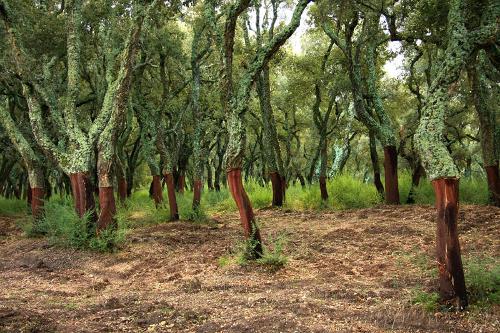 Cork Oaks, SardiniaPhoto: Alessandro Vecchi CC 3.0 no changes made
Cork Oaks, SardiniaPhoto: Alessandro Vecchi CC 3.0 no changes made
In the mountains, there are many holm oaks, ferns and pines. At high altitudes the wild rose grows. Eucalyptus trees and the wild olive tree grow in the lower, warmer areas. In the south, palm trees are well known. The palmanana is a dwarf palm found only on the island of Sant'Antioco and grows no higher than about 25 cm. Myrtle, lavender, daisies and poppies grow in the vast fields. The mastic, in bush or tree form, is common and provides resin for varnish. Disc cacti are found all along the coast and the kermes oak is found especially on the southern coast.
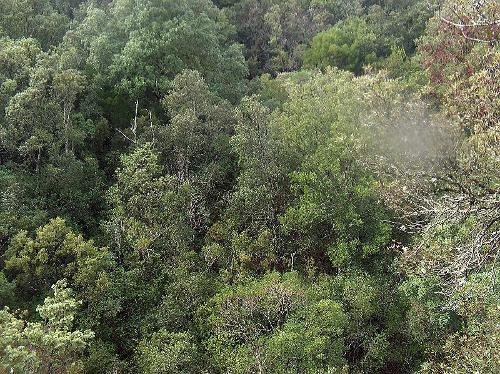 Sardina, MaquisPhoto: Giancarlo Dessì CC 3.0 no changes made
Sardina, MaquisPhoto: Giancarlo Dessì CC 3.0 no changes made
As in Corsica, the maquis (Italian: macchia) grows well in the coastal and mountainous areas of Sardinia. Maquis is a thick, often impenetrable shrubby vegetation that includes myrtle, strawberry tree, blackthorn, mastic and rockrose.
Animals
The mouflon is an endemic species that, apart from Sardinia, can only be found in a few places in Europe. In the woods and undergrowth there are many deer and wild boar.
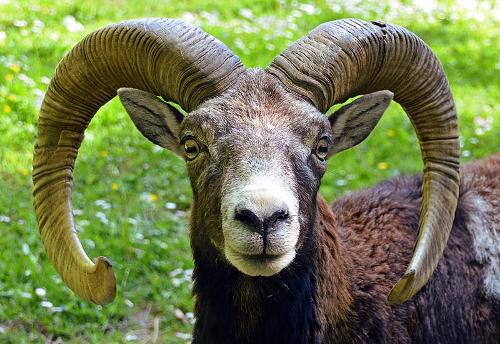 Mouflon, SardiniaPhoto: Clément Bardot CC 4.0 no changes made
Mouflon, SardiniaPhoto: Clément Bardot CC 4.0 no changes made
In the Monte Arcuso reserve lives a small group of Sardinian deer and on the island Asinara lives wild donkeys. The indigenous Sardinian horse roams the Giari di Gesturi plateau and the Capa Caccia headland. Rare is the monk seal, which can be seen again on the west coast, a sign that the ecology is going in the right direction again in that part of the Mediterranean. There are more than enough sheep in Sardinia, between 2.5 and 3 million of them. Special is the Sardinian fox that lives in the forests of the mountain areas just like deer, wild boars, hares and rabbits.
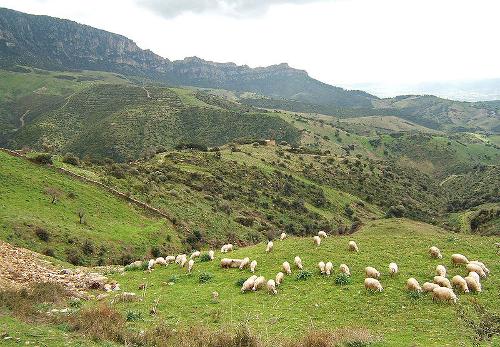 Sheep, SardiniaPhoto: Rafael Brix CC 3.0 no changes made
Sheep, SardiniaPhoto: Rafael Brix CC 3.0 no changes made
True bird paradises can be found at the Flumendosa estuary and in the south-east at Muravera. Flamingos, cormorants and many herons are familiar sightings. The rocks and cliffs form an excellent environment for birds such as wild pigeons, herring gulls and Audouins gulls. The nests of birds of prey such as the griffon vulture, red kite and peregrine falcon can be found closer to the edge of the cliffs. The rare Eleonora's falcon lives, among others, on the islet San Pietro. In the Sardinian marshes, the white-headed duck can still be found. The Sardinian partridge was already brought from North-Africa by the Romans.
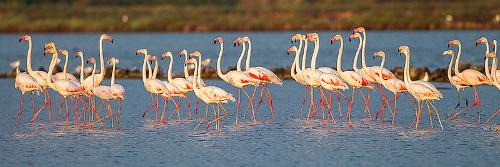 Flamingo's SardiniaPhoto: Francesco Veronesi CC 2.0 no changes made
Flamingo's SardiniaPhoto: Francesco Veronesi CC 2.0 no changes made
The waters around Sardinia are very rich in plants and animals. Dolphins and small whales can be found north-west of Sardinia and in the Strait of Bonifacio. Underwater, the striped sargo and the brown sea bass are common. The crevices in the rocks form an excellent hiding place for the moray eel. Sardinian coral can be found on the rocky seabed at a depth of 15 to 100 metres. In shallow water, the sea anemone attaches itself to the rocks. Gorgonian coral only survives in very clean water. The branches of this coral species can be red, yellow or white.
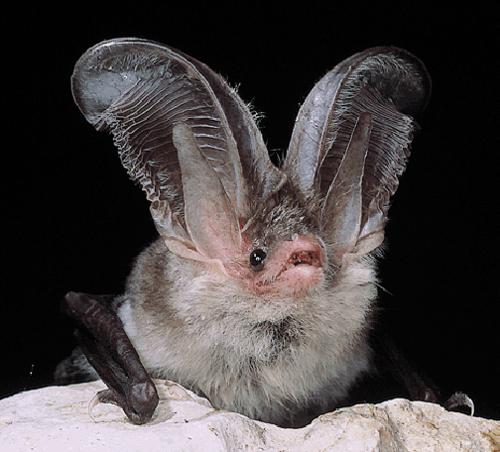 Sardinian long-eared batPhoto: Mauro Mucedda CC 3.0 no changes made
Sardinian long-eared batPhoto: Mauro Mucedda CC 3.0 no changes made
In January 2003, German and Italian scientists discovered a new species of bat. The Sardinian long-eared bat differentiates itself from the four European long-eared species already known. The scientists also reported the discovery of a hitherto unknown subspecies of the brown long-ear, a species found throughout Europe.
Sources
Ardito, F. / Sardinië
Van Reemst
Bülow, F. von / Sardinië
Deltas
Vries, W. de / Sardinië
Gottmer
CIA - World Factbook
BBC - Country Profiles
Copyright: Team The World of Info